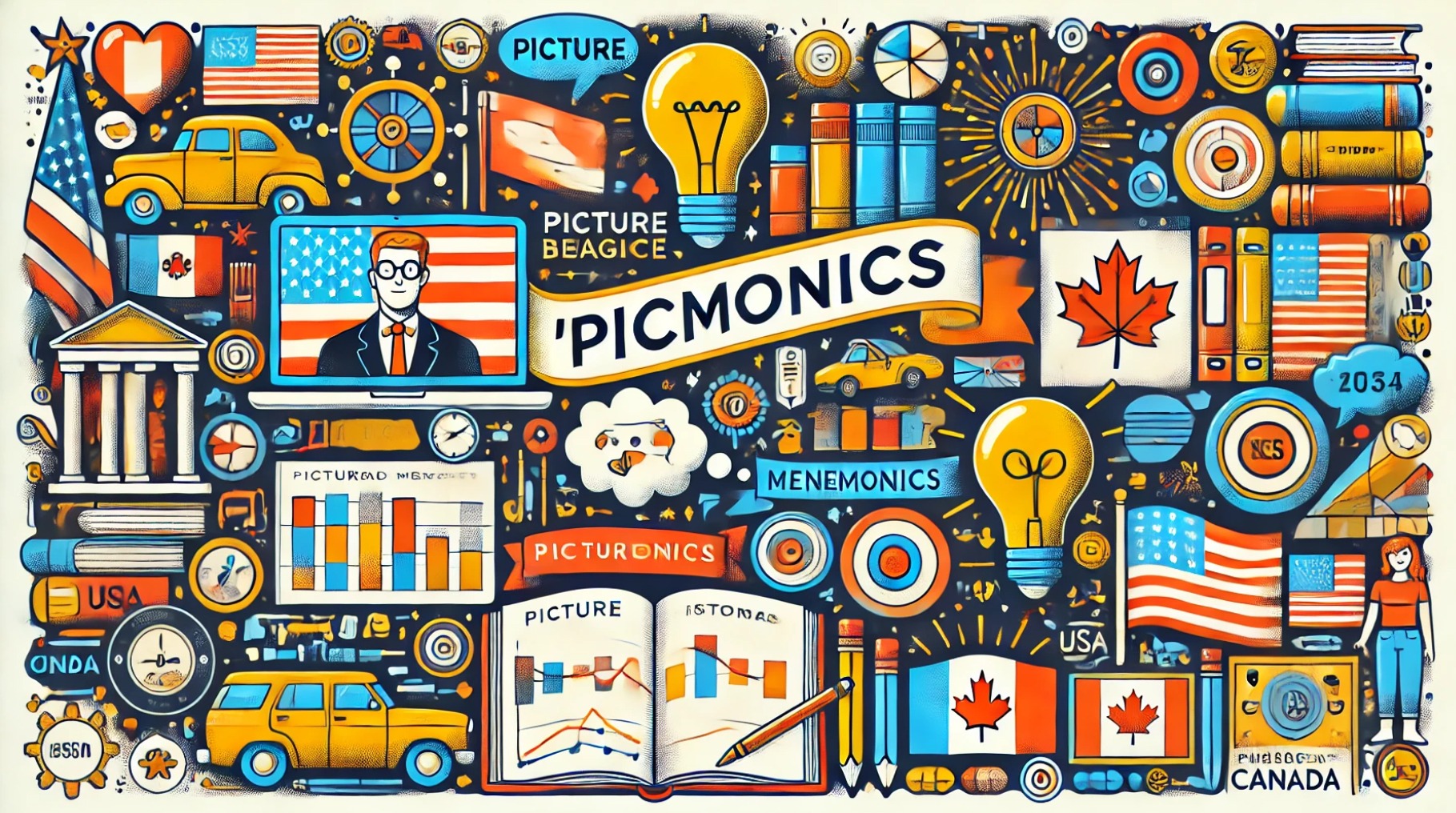Have you ever struggled to remember key facts, historical events, or dense concepts? You’re not alone.
For many of us, traditional rote memorization can feel overwhelming and ineffective. But what if you could turn complex information into simple, memorable visuals? That’s where picmonics—a powerful combination of pictures and mnemonics—come into play.
Picmonics are visual tools designed to enhance memory by combining imagery, humor, and creativity. These drawings or comics serve as memory shortcuts, helping you recall even the most detailed information effortlessly. By engaging your brain’s visual and creative centers, picmonics make learning effective and fun.
What Are Mnemonics?
Mnemonics are memory aids designed to make learning and recall easier by associating information with memorable cues, such as acronyms, rhymes, visual imagery, or storytelling.
The term “mnemonic” originates from the Greek word mnemonikos, meaning “relating to memory,” and is linked to Mnemosyne, the Greek goddess of memory. These techniques have been used for centuries, with early examples found in ancient Greece and Rome, where orators employed elaborate memory systems to recall speeches.
Over time, mnemonics have evolved into various forms, including modern visual tools like picmonics, to help learners of all ages retain complex information more effectively.
Why Picmonics Work So Well
The human brain processes visuals 60,000 times faster than text, making images one of the most effective ways to maintain information. When paired with mnemonic devices—like acronyms, rhymes, or associations—these visuals become a dynamic learning method that caters especially to visual learners.
Visual mnemonics take advantage of the dual coding theory, which states that information presented in both verbal and visual formats is more likely to be retained. A simple doodle or sketch can trigger memories of entire concepts, making picmonics invaluable for studying complex topics like history, science, or foreign languages.
My Story: Picmonics in Action
I discovered mnemonics and picmonics a couple years ago, but only unlocked their full power while studying for exams of winter break. For a class about the history of Canada and the United States. Over the two-week vacation, I turned my study notes into a comic strip that visually narrated key events, bit by bit and all based on the slides presented by the professor.
I created a visual key to help me remember what I was drawing— anything regarding Great Britain or the British crown was represented by a yellow crown. The french were represented by a french flag, and the indigenous populations identified by a feather on the head of the stick figures.
Any part of the comic with red indicates war or conflict, and other basics like blue = water, green = territories.
The result? A perfect 100% on the verbal test I’ve ever taken.
The images I created acted as mental anchors, helping me recall even the smallest details during the exam. Not only did I ace the test, but I also found the entire process enjoyable and rewarding (I love drawing… and academic success).
How to Create Your Own Picmonics
Creating a picmonic is easier than you might think, and you don’t need to be an artist to get started. Follow these simple steps:
- Break It Down: Identify the key points or events you want to remember.
- Get Creative: Think of visuals that represent each concept. Don’t be afraid to use humor, exaggeration, or symbolism (this is what makes it memorable).
- Sketch It Out: Draw your ideas in a comic strip or single panel. Focus on clarity, not perfection.
- Review and Revise: Study your picmonic regularly to solidify the connections in your memory.
For the last days before the test, I read all of my class notes over and over, read the comic independently, and also read my notes while tracking the comic with my finger to remember all the details of the symbols I created.
Then I had people quiz me and ask me random aspects of Canada’s history (names, years, political concepts).
Why You Should Try Picmonics
Picmonics are more than just a study hack—they’re a way to make learning an active and enjoyable experience.
Whether you’re preparing for exams, giving a presentation, or exploring a new subject, these visual tools can transform the way you learn.
If you’re curious about how picmonics work, check out my comic on the history of Canada and the USA. It’s proof that anyone can master this technique and achieve amazing results.
References
Paivio, A. (1990). Mental representations: A dual coding approach. Oxford University Press.
Medina, J. (2008). Brain rules: 12 principles for surviving and thriving at work, home, and school. Pear Press.
Mayer, R. E. (2009). Multimedia learning (2nd ed.). Cambridge University Press.
Clark, R. C., & Lyons, C. (2010). Graphics for learning: Proven guidelines for planning, designing, and evaluating visuals in training materials. Wiley.
Willingham, D. T. (2009). Why don’t students like school? A cognitive scientist answers questions about how the mind works and what it means for the classroom. Jossey-Bass.

One response
[…] Technological advances have also influenced how we use mnemonics. Today, digital tools and apps allow users to create personalized memory aids, from simple flashcards to sophisticated visual mnemonics like picmonics (picture-based mnemonics). […]